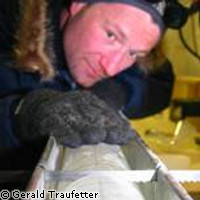Europeans unlock puzzle of centuries-old methane question
Ice cores play a major role in climate research because they act as a historical point of reference, enabling researchers to take direct measurements of the atmospheric composition and greenhouse gas concentrations of the past. From its drilling, the European Project for Ice Coring in Antarctica (EPICA), has obtained for the first time key information on changes in methane levels. The EU provided € 8.5 million in funding for the work, the findings of which were recently published in the journal Nature. Under the programme, the EPICA researchers drilled and assessed the ice core, located at Dronning Maud Land in the Atlantic sector of Antarctica. Their analyses were then compared with those taken from an ice core in North Greenland. The data obtained gave the team the information they needed to identify the most significant processes responsible for changes in natural methane concentrations during the transition from the last ice age to our warm period. The findings show that wetland regions emitted less methane during glacial times, while forest fire activity remained constant from glacial to interglacial times. The work conducted by EPICA provides insight into natural changes in the atmospheric concentrations of CH4 - otherwise known as the greenhouse gas methane. This is the first glacial/interglacial record of the carbon isotopic composition of methane, thus providing key information on the sources that triggered the CH4 concentration changes. The data showed that glacial concentrations totalled on average 350 parts per billion by volume (ppbv) and increased to some 700 ppbv during the last glacial/interglacial transition. Human methane emissions also artificially boosted CH4 concentrations to around 1,750 ppbv over the last few centuries. The researchers developed an analytical method enabling changes in the isotopic ratio of 12CH4 and 13CH4 in ice core samples to be quantified. This ratio gave the researchers insight into the methane sources responsible for the changes. 'These studies bring us much closer to a quantitative understanding of what happened with wetlands and methane in the past,' explained Dr Hubertus Fischer from the Alfred-Wegener-Institute for Polar and Marine Research, and lead author of the paper. 'This is essential to improve our predictions of how the methane cycle will respond to an increased warming in the future,' he underlined. Temperatures in continental Antarctica are much lower than those found in Greenland, the largest island in the world, located between the North Atlantic and Arctic Oceans. A challenge for the EPICA team was working in unexplored regions that called for extensive meteorological and geophysical work to pick drill sites. EPICA was one of this year's winners of the Descartes Prize for Research for its work in retrieving past climate records. Thanks to this research, temperatures and greenhouse gas concentrations up to the last 800,000 years could be measured.



